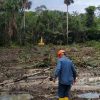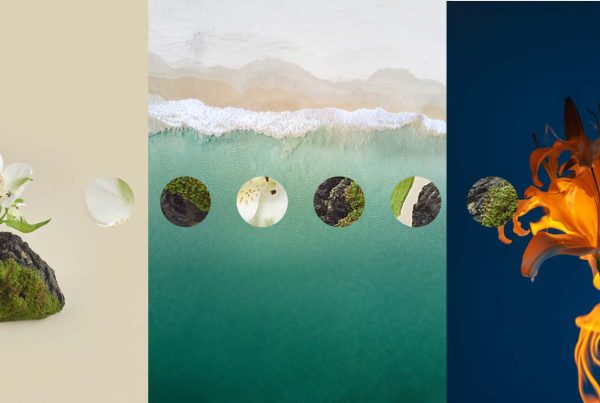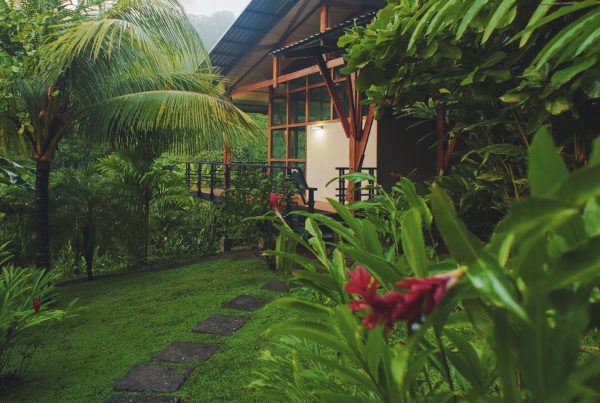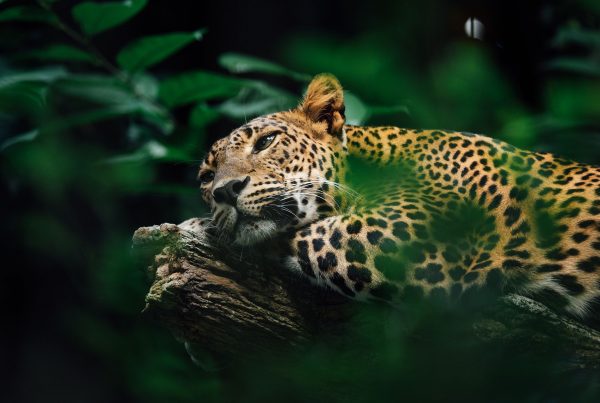While we’ve come a long way, the psychedelic movement still has a long road ahead
What was a Shipibo-guided, trauma-informed ayahuasca center doing at the largest psychedelic conference? So happy you asked.
For the first time ever, Soltara sponsored MAPS! Picture our team (11 of us strong) behind a head-turning, plant-draped booth teeming with all sorts of conversation and exchange with friends old and new. Alumns stopped by to say hi, we hugged it out with longtime advisors (heyyyy, Dennis McKenna), and opened arms to new friends curious to come on retreat and partner with us. The love for plant medicine was alive, reaffirmed again and again.

The Soltara booth at the Psychedelic Science Vendor Village

The Soltara staff, co-founder and advisor, Dennis McKenna (fourth from the left)
In case you missed it, Psychedelic Science by MAPS, a colorful meeting (or rather: melting pot) of 12,000 minds, united quite the eclectic crowd across the psychedelic spectrum. Politicians, lawyers, VC investors, policy makers and journalists shared rooms with indigenous leaders, elders, academics, celebrities, business owners, therapists, and authors. Everyone had a seat at the table, stage and auditorium. No one left behind, including our co-founder Melissa Stangl who gave a brilliant talk on a panel, “Building the next generation of psychedelic retreat centers,” alongside other esteemed retreat business owners. We’ll dive into that later.
This notable cross-section of fields as diverse as the psychedelics under exploration was likely possible thanks to this: MAPS’s decision to keep all industries separated by stage. While one (relatively calm) protest broke out at the end by those advocating for more indigenous inclusivity in policy making—speaking to some valid concerns shared by many of us—the week on the whole was civil and respectful. A massive win and necessary measure, we think, for the movement to advance. This is all so that more people can heal and the right voices can support conversations and decisions happening beyond the conference. How that will play out continues to shape shift and unfold in ways leaving us with more open tabs than we’re able to close. With clinical trials underway and the majority of the movement operating in a capitalistic, top-down framework, who stands to benefit from these psychedelic treatments? How do we consider all necessary perspectives to uphold the sacred origins and potentials of the medicine? What will the future of psychedelic therapy lose by not first and foremost centering indigenous voices? Big questions with complex answers, which thanks to our integration tools, we’re able to sit with and digest. But more on deeper learnings in a bit.

Our co-founder Melissa and The Maloca (integration platform) co-founder Sylvia
First, we’d be remiss not to share some conference highlights—popcorn style. We showed up eager, excited, curious and above all, open to learn and connect. We challenged ourselves to listen with our whole bodies, not just with our heads. And what unfolded felt like a ceremony of its own kind. During her panel, our co-founder catalyzed a winning applause, helping to cement Soltara as a true leader in the broader plant medicine movement. We gave a speech and raffled off a free retreat during the MAPS Veterans Dinner to honor veterans and families who continue to brave PTSD. One of us sparked a refreshing debate with none other than MAPS founder, Rick Doblin. We sat in rooms listening to research results featuring Soltara retreat participants (big shout out NYU, Ohio State University & Center for Psychedelic Drug Research and Education, and our beloved guests who shared their insights in the name of science). We clapped hard, listened curiously, breathed with gratitude and learned soulfully—all in the spirit of collaboration. While we have not stopped integrating, one thing is for sure: Plant medicine is a power player in the psychedelic community. And we’re here on the frontlines, humbly honored to be a part of it.

Our team at the MAPS Veterans Dinner
Our top 5 learnings about healing, ayahuasca and the future of retreats
1. Healing isn’t just individual. It’s an ongoing relational, symmetrical, and networked process

The whole Soltara team plus Maloca partners kicking off the weeks at MAPS
While for many of us, healing starts with the self, this isn’t always the case. Healing is a relational process, and even when our journey begins by going inward, it doesn’t stop with our own personal transformation. Whether on retreat, in therapy, or during integration, it certainly doesn’t flourish in a vacuum by yourself. Healing has a much wider aperture that’s inextricably connected to the collective, which practically means how we’re integrating with our families, communities, places of work, environment and planet. This community-oriented approach pulls straight from indigenous schools of thought, and is a much-needed radical departure from our modern social paradigm—one that’s built on asymmetrical relationships or unequal give and take, boiling down to destructive forces like extractivism, colonialism and privileging a select few at the cost of everyone else. In the Indigenous Leaders Panel, a speaker said so eloquently, “We can’t cut someone else’s roots to gain our own healing.”
According to indigenous healing traditions, within a ceremony, two distinct levels exist despite the common tendency for us to prioritize one more heavily: the personal ceremony and the community ceremony. Many of us are familiar with the former, but the latter can feel less familiar. What this indigenous lens brings into sharp focus is that individual healing and collective healing are mutually interdependent and necessary for true integration of healing to take root (ie: new communication models, community transformation, redirection of daily duties in response to evolving dynamics, etc). It wouldn’t be a reach to say that community healing extends to the environment and those who preserve our ancestral healing knowledge through bio conservation efforts to protect our precious ecosystems and plant habitats. This naturally evokes the questions: “What if we don’t need to be fully healed to evolve, grow and learn?” and “What if healing can happen individually and collectively simultaneously, elevating our communities and ecosystems?”
What if we can allow our community ceremony to be a place for us to continue and deepen that work?
2. The future of plant medicine retreats is modeling ethical and regenerative business practices

Maestro Americo Lopez Sanchez at Playa Blanca, Costa Rica preparing a ritualistic flower bath for pasajeros before ceremony
Whereas modern businesses tend to privilege profit over all else, regenerative businesses feed back into the ecosystem that is the organization and its people, and we’re committed to building this way of working into existence. Not only that, we believe it’s actually already here at Soltara. We have been operating with a not-for-profit business model since our inception, which is to say, profit is not our motivator for this work, and all profits have been re-invested into reciprocity initiatives, our people, center, programming, the land we steward, and other business development projects. This helps us to evolve and grow based on the needs of our community and space, and was a core theme in Melissa’s panel, “Building the next generation of psychedelic retreat centers.” During this talk, we didn’t hold back on how we’ve built principles of ethics into our business. Take two of the burning FAQs we typically and joyfully welcome: Why are retreat prices so high? How do I know Soltara is not culturally appropriating from indigenous cultures, but holding high ethical standards?
For us, the answer to one folds into the other. We wouldn’t be doing this work without our Peruvian Shipibo Maestros and Maestras, the lineage keepers of plant medicine and primary holders of the ceremonial space. What many don’t realize is that their home of origin isn’t Costa Rica or our other retreat locations in Tarapoto and the Sacred Valley, meaning they spend extended amounts of time living apart from their families in the Ucayali region of Peru. This kind of commitment isn’t lost on us, and we honor it by going beyond a basic transactional relationship. To that end, we pay our Shipibo healers a relatively high wage so they can support their families back home, build schools in the Amazon and publish books to preserve the ancestral knowledge we talked about earlier. Most importantly, we are in constant conversation with them about their needs both in and outside of the ceremony. As for our Western, trauma-informed facilitators (who come from all corners of the world like Israel, Chile, Italy, the US, etc,), we understand firsthand how involved and intensive healing work is. We ensure high compensation and prioritize sufficient breaks to help prevent burnout, an all-too-common experience in the world of ayahuasca facilitation. Another thing we prioritize is contributing to professional development opportunities, so our staff feels supported in their evolution both as people and facilitators. This help-the-helpers ethos is core to our culture around staff sustainability, safety and well-being. All that to say, our retreats are priced thoughtfully and consciously with these operational costs in mind.
“If your liberation is at the expense of other people, it’s not liberation. It’s capitalism.” At Soltara, we stand for liberation and are always actively finding new ways to account for everyone’s well-being. The safety and respect of our healers, facilitators, staff and guests come out on top.
3. Cultural appropriation and inspiration are two different things

Maestro Francisco Vasquez Huayta blessing a tapestry featuring the visual representations of the “icaros” or healing songs
This perfectly segues into the often blurry line that exists between cultural appropriation and inspiration, as one speaker highlighted. How to spot it and course correct is where things get ambiguous. Not only that, the cost of leaving it to chance can wreak havoc on the cultures that have been stewarding these plant medicines for thousands of years. All by perpetuating the colonialist model of taking what’s not ours to take, and exploiting it for commercial profit without the necessary recognition, collaboration, respect, or reciprocity. Cultural appropriation has to stop with all of us.
In a panel discussion, “Can modern psychedelic medicine take lessons from plant medicine traditions?” we got clearer on the distinction. First, “appropriation” is described as essentially stealing from another tradition without due respect to what that thing means (ie: wearing a Native American headdress at a rave) and/or confusing ritual shapes with ritual power (ie: a Maestro who has spent decades understanding how to work with the spirit of tobacco and blow smoke to cleanse someone energetically is not the same as a Westerner brand new to the path blowing smoke on someone). Contrast that with “inspiration,” which takes on a whole other meaning. In many cases, being inspired means taking the universal question a certain ritual or practice asks, and answering it locally. For example, how does one go from altered states to altered traits? From a place of inspiration, we’d benefit to find a locally-appropriate language of care and healing that supports people undergoing transformation.
Within the Shipibo tradition of curanderismo or healing, there is a language of care that is different from the language of everyday life — one that cannot be misinterpreted, such as the practice of soplar, which is to blow smoke or floral water over the crown, back, or hands of a patient. As mentioned earlier, this practice takes years to master as it’s working with the energetic spirit(s) of what’s being blown. Taking inspiration from this practice would involve creating our own language of care, such as learning how to hold space for someone or support their emotional processing. On the other hand, appropriation would be attempting to mimic the exact practice without truly understanding the skillset and relationship required to work in this way.
Our Western facilitators do not perform any of the icaros or soplars during ceremony. That’s the domain of our Shipibo healers who’ve undergone years, and decades, of training, dietas and apprenticeship with their teachers. This isn’t to say that any Westerner who has undergone similar training is automatically appropriating. The questions then become about the nature of their relationship and reciprocity towards their teachers, the cultures they trained with, and the permission granted by those teachers within that culture, among other things. However, our facilitators would pull inspiration from these wisdom traditions as well as their understanding of the cultural context of our guests to ensure they feel seen and cared for emotionally, physically, and energetically.
4. For psychedelic therapy to be inclusive, it must be decolonized

Rachel Harris presenting “Swimming in the Sacred: Wisdom from the Psychedelic Underground”
As we shift away from cultural appropriation, we all have to do our part to turn towards models of cultural sensitivity and decolonization. It starts with breaking the stigma of how we view and treat underground therapists, healers, and practitioners. Anything deemed “underground” connotes a perception that’s less than, or not to be taken seriously. Ironically, it’s the indigenous healers that have stewarded plant medicine healing for thousands of years when it could’ve literally cost them their lives (we’re talking as far back as the 15th century and possibly longer). Faced with punishable consequences, these indigenous healers went underground out of survival to continue the work. Psychedelic practitioners drawn to this work centuries later followed a similar trajectory, after Nixon declared the War on Drugs and put a kibosh on psychedelic research. That was the story of Carl Jung as well as Rachel Harris. Her talk, “Swimming in the Sacred: Wisdom from the Psychedelic Underground,” was illuminating. As an underground practitioner for 20 years, she wrote this book as an homage to our elder female wisdom keepers. The ones we have to thank for access to ancestral knowledge—without which, places like Soltara wouldn’t exist.
Unlike colonization which exists to separate, sacred medicines help us reconnect back to ourselves, the community and planet. The sacred will live on not through cultural appropriation, but from decolonized practices like respect and reciprocity. Our future psychedelic therapists, we believe, should form their own firsthand connection to the sacred medicines and ways of knowing if their ultimate goal is to lead patients towards safe and ethically responsible healing.
5. Healing will lose out by ignoring indigenous wisdom

The maloca or Shipibo healing hut at Playa Blanca, Costa Rica
The movement stands to gain tremendous benefits by acknowledging the profound, ongoing influence of indigenous wisdom. However, our work is far from complete, a sentiment echoed by Rachel Harris and the insightful panelists in the discussion on ‘Integrating Indigenous Wisdom into Psychedelic Therapy.’ Central to indigenous thinking is a deep reverence for the unseen plant spirits. It’s on all of us to remember that plant medicine is a living, breathing entity, existing beyond our cognitive limits. This can be challenging based on a Western worldview, which tends to over-humanize everything, blocking us from understanding the true nature of the medicines. Not to mention, by taking sacred medicines out of their local indigenous contexts and forgetting that they’re plant spirits we commune with (not extract from), we risk creating enormous harm as has been the case for plant teachers like tobacco, coca, and opium. To take a popular example, tobacco used ceremonially became cigarettes, smoked unconsciously, and turned into one of the leading causes of death through lung cancer. When we step into an indigenous lens on the other hand, we tap into the interconnected cosmology that levels the playing field between seen and unseen forces. A deeper level of appreciation can be felt for their wisdom, cultivated through generations of embodied experience, versus mere knowledge, which is intellectually acquired.
It doesn’t stop there. Western ways of treating disease and the reductionist, mostly spiritless nature of scientific research are incomplete on their own. We can’t divorce these profound compounds from the vast reservoirs of ancestral knowledge and ceremony. For one, ayahuasca by itself isn’t the only driver of healing. Yet, we find ourselves often neglecting the importance of preparation and diet, the ceremonial container and icaros (healing songs), the role of plant consciousness, the exploration of shadows, integration, reconnection to nature, and trauma that demand our attention. Also, in contrast to the Western pharmaceutical approach of suppressing symptoms, indigenous wisdom focuses on unearthing and confronting the symptoms of trauma in order to heal them. They understand that trauma can be a rite of passage, an initiation, which we must confront to experience true breakthroughs in healing.
6. Collaboration is the future of bringing forward safe, ethical and equitable care

Dr. Bia Labate, Executive Director of Chacruna and the Public Education & Culture Specialist at MAPS, joins Soltara’s advisory board
By this point, we’ve likely hammered home the point – that none of us can advance healing alone! This is true on the individual side, just as much as it is on the organizational side. At Soltara, we know we can go farther, together. That’s why we’ve prioritized partnerships within Costa Rica and abroad to stand in solidarity as the psychedelic healing movement continues to evolve in proportionate response to the mental health epidemic that sadly continues to soar.
First, we’ll touch on our work on the ground in Costa Rica. For some of you, you may know that we’re permitted as an alternative health care clinic and do operate above board as ayahuasca is legal. That said, ayahuasca is not protected as a cultural heritage in Costa Rica like it is in Peru. With its status unprotected and vulnerable to the whim of the government, we’ve made it our mission to start building out a National Alliance of Costa Rica Centers (La Alianza de Plantas Sagradas) to unite all the organizations on the ground that work with the medicine. This includes local government officials and advisors from The International Center for Ethnobotanical Education, Research, and Service (ICEERS) to come together to set new standards around community care, advocacy, education and research. All in the spirit of earning and maintaining trust of the Costa Rican government and building new inroads for keeping ayahuasca’s status safe.
We’ve also looked beyond Costa Rica to weave our web more intricately with allies in the space, including Amazon Watch, Amazon Conservancy, Heroic Hearts Project, and Chacruna Institute for Psychedelic Plant Medicines to name just a few. Speaking of Chacruna, during the conference, our worlds crossed IRL in big ways. We announced an official Soltara-Chacruna alliance, welcoming the brilliant Dr. Beatriz Caiuby Labate to our advisory board. With a Ph.D. in social anthropology from the University of Campinas (UNICAMP), Brazil, Dr. Labate has dedicated her career to exploring the profound impact of plant medicines on individuals and society. As the Executive Director of Chacruna and the Public Education and Culture Specialist at MAPS, she continues to be a prominent voice in the psychedelic community.
We wholeheartedly believe in Chacruna’s mission to raise awareness, educate, and foster meaningful discussions within the psychedelic and plant medicine resurgence. Chacruna’s emphasis on amplifying Indigenous, BIPOC, queer, and marginalized voices in the movement resonates deeply with our values. For many years, we’ve actively supported, attended, and co-sponsored Chacruna’s conferences, recognizing their dedication to celebrating and centering diverse perspectives within the psychedelic realm. Many of our staff members have also benefited from various Chacruna courses, allowing them to deepen their own understanding and relationship with plant medicine, in harmony with our Shipibo healers. We’re also grateful to support their staff members in working with our healers and team at Soltara. Together, we’re looking to advance the psychedelic movement with sensitivity, inclusivity, and unwavering dedication.
In closing
There’s never been a more potent time to get involved with the psychedelic healing movement, with all its flaws and gaps. While the field is burgeoning on every side of the aisle, there’s still so much to figure out together. Emphasis on “together,” as we are all force multipliers—together. There’s so much we can all learn from being open, questioning convention, and wrestling with the harder questions. How that plays out remains to be seen. But we’re optimistic that balanced meaning-making across indigenous tradition and modern psychotherapeutic thinking will move us all in the right direction. Diversity in head, heart and spirit is, after all, in our nature.














